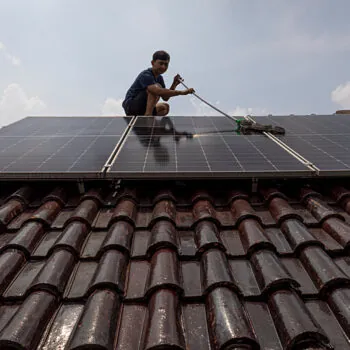The 18th Central Committee of the Communist Party of China (CPC), led by the new President Xi Jinping and Premier Li Keqiang, has just completed the Third Plenary session in November 2013, which outlined arguably the most important reform in China since the late 1970s when China opened its door to the world. With “significant results” expected by 2020, Chinese leadership believes these reforms are needed to enable China to avoid the middle-income trap. Crucially, it seeks to rectify and refine the core elements of China’s economic and social development, including the economic structure and the role of the government. Specifically, the market and private sector are given a bigger role in the economy.
The Chinese government issued a “Decision on Major Issues Concerning Comprehensively Deepening Reforms” (henceforth the ‘Decision’) following the Third Plenary Session that contains more detailed provisions regarding the various changes and targets to be achieved by 2020. At the highest level, President Xi’s government strengthens the power of the centre by establishing the Central Party Leading Group on Comprehensively Deepening Reform, which will design reform plans and consolidate and supervise their implementation. A State Security Council has also been set up to enhance China’s overall security strategy.
The 60 ‘tasks’ set out in the ‘Decision’ cover issues such as economic reform, financial reform, rural land reform, household registration reform, fiscal reform, judicial reform, governance and etc. The reform agenda is ambitious and its success will depend on effective implementation. In general:
- There is a clear direction of accelerating structural economic reforms driven by centralisation and reassertion of Party control. Major political reforms seem to be off the table for at least the next five years. Some observers argue that the Leadership sees political centralisation is a pragmatic necessary to take on entrenched vested interests (e.g. in SoEs) who will attempt to block reform; others that this is a core part of Xi’s political philosophy.
- There are clear tensions between the assertion of Party primacy over all other parts of government including the judiciary (e.g. rejection of “constitutionalism” and separation of powers) and the intention to foster more market based decisions, which rely on fair enforcement of contracts and the elimination of corruption. Many observers think that these tensions could derail the whole package. However, a major element of the reform package is the changing role of the government, which retreats in areas where the market takes over. Success of the reform depends on the achievement of a new “equilibrium” between the role of the government (and the CPC) and the market.
- The shift towards “quality” of investment potentially will support moves to a resource efficient and cleaner economy – especially through the urbanisation process and strong air pollution reduction packages. Delivering this will require stronger and improved governance at the regional and city level, combined with availability of finance to support more capital intensive “green” technologies and infrastructure. The details of reforms in these areas will be critical.
- The reforms signal an intention to open markets in key sectors such as power, services, infrastructure to greater private investment, and also to increase access by foreign investors. This could generate great opportunities for European green technology and services companies. However, observers see the reforms of SoE’s as relatively weak and it remains to be seen how much of their incumbent power and privileges will be curtailed – especially as a proportion of their profits will now be channelled to the new Social Security fund. Although China is negotiating a new investment agreement on market access with the EU, and is establishing new Free Trade Zones, it remains to be seen whether these will radically improve market access for foreign companies in the short term.
These changes that will propel China to the next stage of development will also have implications internationally, especially in Europe. Europe is currently a strategic partner to China as it is China’s biggest trading partner and still provides the largest market for Chinese export. Europe is also the main source of high and environmental friendly technologies for China. This will change by 2020 if the Chinese reforms yield substantial results; and Europe needs to rethink its domestic and external policy with China:
- As China’s domestic markets grows its reliance on external demand for stability will weaken. This will reinforce the current shift in the focus of relations with the EU away from trade and towards broader political and economic governance issues. The EU needs to reflect this shift in focus, and therefore its relative importance to Chinese foreign policy, in its diplomatic approach.
- China is moving to a more plurilateral and bilateral economic foreign policy at the regional and Trans-Pacific level. Europe’s role in TTIP and with ASEAN will therefore become seen as critical areas for shaping its engagement with China and development of internal rules and norms; for example, on the development of international rules covering competition and support for State Owned Enterprises.
- Given the tensions inside the Chinese reform package, Europe should push hard for liberalisation of strategic sectors that support its economic and broader strategic goals. For example, prioritising low carbon or green sectors – especially those associated with urbanisation – inside the EU-China Investment Agreement – as is already done inside the TTIP negotiations.


